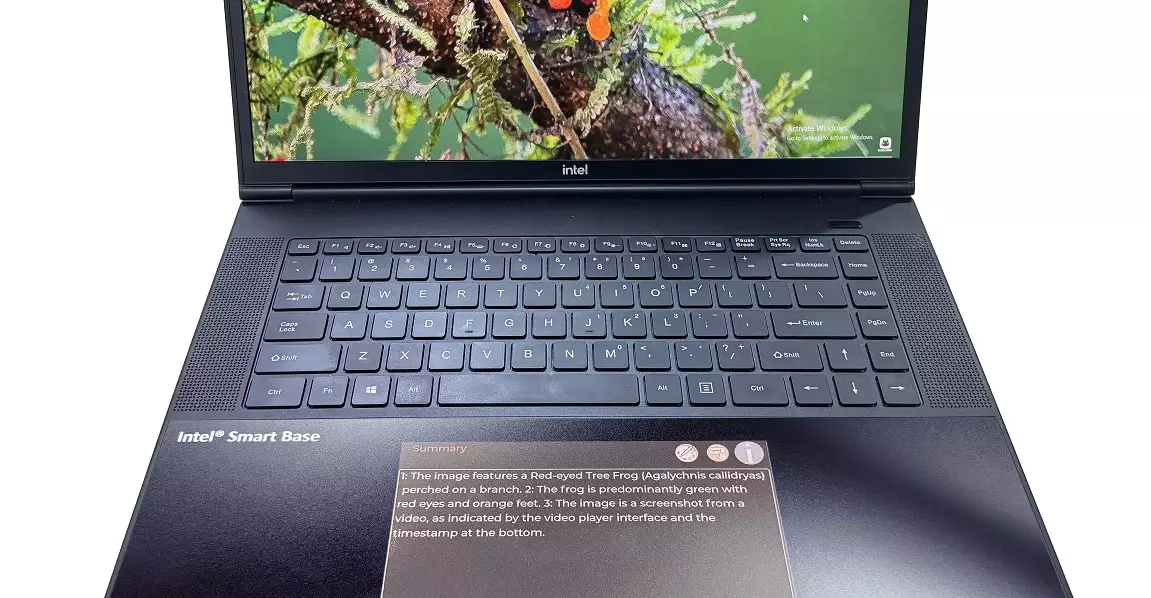The landscape of laptop technology is on the brink of a quiet but significant revolution with the integration of innovative low-power screens, specifically those utilizing E Ink’s cutting-edge electronic paper technology. Traditionally, touchpads have been modest, primarily serving as precise input tools. However, recent developments suggest a transformative shift where these components evolve into multi-faceted, dedicated spaces for AI-driven interactions and personalized productivity enhancements. This change isn’t just about better hardware; it signals a fundamental reimagining of how users engage with their devices.
E Ink’s approach to redesigning the touchpad as a secondary, AI-friendly interface offers promising avenues for streamlining our workflows. Unlike typical touchscreen overlays or small LCD screens that can distract or drain batteries rapidly, E Ink’s technology provides a dedicated real estate for notifications, quick controls, and AI assistance—without compromising power efficiency. This shift could foster a more seamless, less cluttered user experience, where AI tools operate quietly in the background or on-demand, rather than forcing users to navigate through multiple windows or applications.
Think about having a dedicated area on your laptop that constantly provides contextual information—be it summarizing long texts, offering editing suggestions, or managing your calendar—all while you focus on your core tasks. This will allow users to stay engaged and productive without the cognitive overload caused by collapsing and expanding different application windows. The E Ink touchpad could become a personalized command center, where AI assistants are no longer external peripherals but integrated interfaces, improving both convenience and efficiency.
Energy Efficiency and Practical Advantages Over Conventional Displays
One of the most compelling aspects of light-cone technology like E Ink’s is its exceptional energy efficiency. Unlike LCD or OLED screens that constantly draw power, E Ink only consumes energy when refreshing display content. This characteristic is crucial in an era dominated by power-hungry AI applications that can significantly reduce battery life. By integrating an E Ink touchpad, laptop manufacturers could drastically extend operational hours, making laptops more reliable for users who rely on portable computing.
Moreover, the static nature of E Ink screens mitigates visual fatigue and distraction. Color e-paper displays, such as those proposed for the new touchpads, can emulate the aesthetic versatility of LCDs without the power draw. However, they excel mainly in text-based content or simple graphics. While this may limit the display of high-resolution videos or complex images, the primary use case—quick info snippets, task shortcuts, notifications—remains ideal.
Yet, this technology does raise questions about user experience. Could constant updates to an E Ink display cause flickering or delays that hamper usability? While E Ink has made strides in improving refresh rates, it’s not yet on par with traditional screens. Still, for information-harvesting, quick commands, or AI interactions, the trade-off seems worth it, especially considering the longevity it could grant on a single charge.
The Potential Impact on Laptop Design and User Interaction
The true promise of E Ink’s innovation lies in its potential to redefine hardware form factors and user interaction models. Modern laptops often rely heavily on the screen for every interaction, fundamentally anchoring our digital lives around high-energy displays. The introduction of a color E Ink touchpad as a dedicated auxiliary interface challenges this norm, allowing a laptop to be more adaptable, energy-efficient, and user-centric.
While current efforts by companies like Asus have explored secondary displays—often small LCD panels that can interfere with portability—the E Ink approach offers a more subtle, power-sipping alternative. Imagine a laptop that dynamically adjusts its touchpad to show relevant AI suggestions, notifications, or shortcuts, all while maintaining battery health. This capability could empower users to customize their workflows significantly, reducing reliance on multiple physical peripherals or cluttered desktops.
However, for this vision to materialize into mainstream adoption, technical challenges must be addressed. Will the resolution and refresh speed of E Ink displays meet the demands of modern users? How will operating systems integrate these new touchpad functionalities? The trail ahead is uncertain, but the implications are profound. We could witness a paradigm shift toward more mindful, energy-saving hardware that blends traditional input methods with intelligent, context-aware interfaces.
E Ink’s push into low-power, AI-capable touchpad technology exemplifies the kind of innovation that, while subtle in appearance, could profoundly influence how we interact with our devices for years to come. This advancement is not merely an upgrade; it’s a strategic rethink of foundational hardware components, emphasizing sustainability, efficiency, and smarter human-computer engagement.

